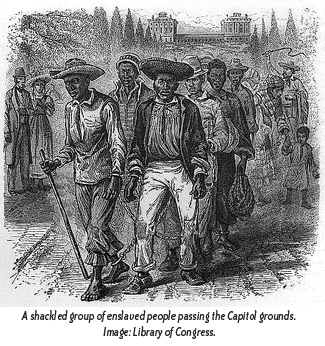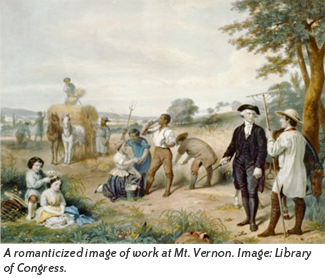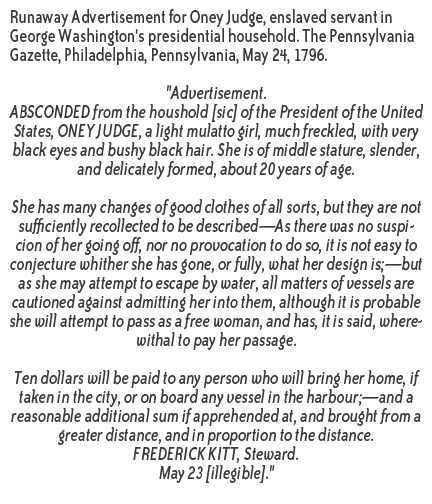by CLARENCE LUSANE

Schools across the country are adorned with posters of the 44 U.S. presidents and the years they served in office. U.S. history textbooks describe the accomplishments and challenges of the major presidential administrations — George Washington had the Revolutionary War, Abraham Lincoln the Civil War, Teddy Roosevelt the Spanish-American War, and so on. Children’s books put students on a first-name basis with the presidents, engaging readers with stories of their dogs in the Rose Garden or childhood escapades. Washington, D.C.’s Smithsonian Institution welcomes visitors to an exhibit of the first ladies’ gowns and White House furnishings.
Nowhere in all this information is there any mention of the fact that more than one in four U.S. presidents were involved in human trafficking and slavery. These presidents bought, sold, and bred enslaved people for profit. Of the 12 presidents who were enslavers, more than half kept people in bondage at the White House. For this reason, there is little doubt that the first person of African descent to enter the White House — or the presidential homes used in New York (1788-90) and Philadelphia (1790-1800) before construction of the White House was complete — was an enslaved person.

The White House itself, the home of presidents and quintessential symbol of the U.S. presidency, was built with slave labor, just like most other major building projects had been in the 18th-century United States, including many of our most famous buildings like Philadelphia’s Independence Hall, Boston’s Faneuil Hall, Thomas Jefferson’s Monticello, and James Madison’s Montpellier. President Washington initially wanted to hire foreign labor to build the White House, but when he realized how costly it would be to pay people fairly, he resorted to slave labor.
 IMAGE/Zinnedproject Newspaper ad in the May 24, 1796 Pennsylvania Gazette offered a $10 reward for the return of Oney Judge, a runaway slave of the first United States President George Washington (1732-1799) (1789-1797).
IMAGE/Zinnedproject Newspaper ad in the May 24, 1796 Pennsylvania Gazette offered a $10 reward for the return of Oney Judge, a runaway slave of the first United States President George Washington (1732-1799) (1789-1797).
…
George Washington’s stated antislavery convictions misaligned with his actual political behavior. While professing to abhor slavery and hope for its eventual demise, as president Washington took no real steps in that direction and in fact did everything he could to ensure that not one of the more than 300 people he owned could secure their freedom. During the 10 years of construction of the White House, George Washington spent time in Philadelphia where a law called the Gradual Abolition Act passed in 1780. It stated that any slaves brought into the state were eligible to apply for their freedom if they were there for longer than six months. To get around the law, Washington rotated the people working for him in bondage so that they were there for less than six months each.
Huffington Post for more
